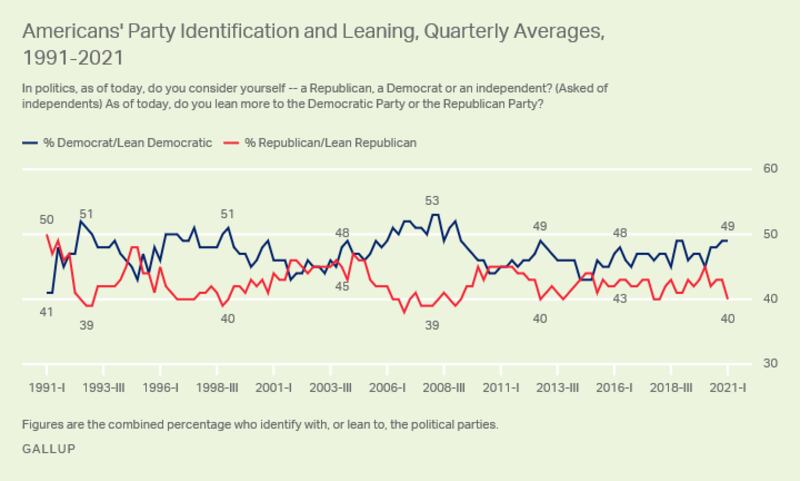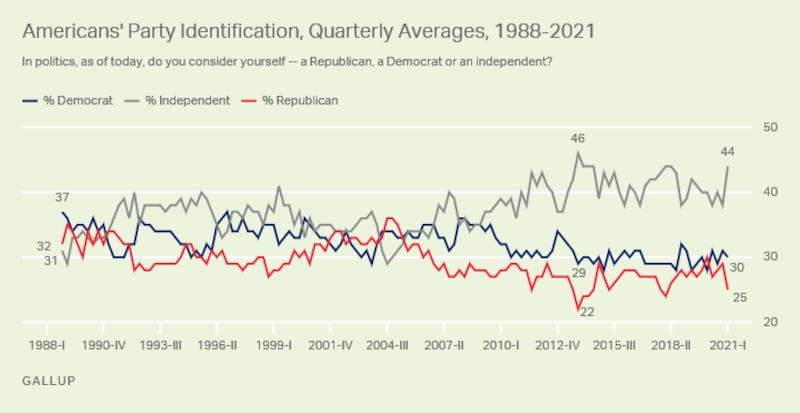The gap between the percentage of Americans who identify as Democrats compared to Republicans is at its highest point in nine years.
According to a Gallup poll released Wednesday, 49% of Americans consider themselves Democrats or Democratic-leaning independents, while 40% consider themselves Republicans or Republican-leaning independents. Democrats’ 9 percentage-point advantage is their largest since 2012, when Barack Obama was reelected to a second term.

It’s not uncommon for Democratic affiliation to rise after a Democrat becomes president, or for the percentage of independents to rise during a non-election year, Gallup said. The percentage of Americans who identify as independent, though, is unusually high at 44%. The increase in independents came more from Republicans than Democrats. Here’s Gallup’s poll with independents broken out as their own group:

While independents make up the largest segment of voters, most tend to lean toward one party over another.
“The View” host Meghan McCain said on the show Thursday that there was still hope for down-ballot Republicans, even though many were turned off by former President Donald Trump’s administration.
“I wouldn’t be so quick to count Republicans out,” she said. “We live in a two-party country, so which lever the person decides to pull, if it’s someone who left the ‘Trump Party’ but is still leaning Republican and wants to vote for a down-ballot Republican candidate, I still think there’s a lot of hope for down-ballot candidates.”
McCain said Republicans do a poor job “explaining why we’re conservative, why we believe in small government,” and she also characterized radical members of her party as a distraction.
“Unfortunately, the more radical elements of our party get the most attention, and the most psychotic and crazy, the Matt Gaetzes of the party end up sucking up all the oxygen,” she said.
Since Gallup began tracking party affiliation in 1991, Democrats often outnumber Republicans, and typically by about 4 to 6 percentage points. Democrats’ biggest advantage came in the late 2000s, at the height of former President George W. Bush’s unpopularity and Obama’s election in 2008.
Republicans have led Democrats following big midterm election wins or when Republican presidents have been popular, like Bush immediately following the 9/11 attacks.


